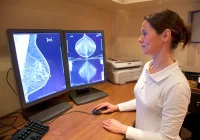Computed tomography (CT) has become a cornerstone of emergency department (ED) diagnostics due to its high sensitivity and rapid acquisition of detailed internal images. Emergency physicians (EPs) often initiate CT scans to guide urgent decisions, particularly in trauma and acute medical conditions. However, in settings where real-time radiologist interpretation is unavailable, EPs frequently interpret scans themselves. Although such practice can expedite treatment, it introduces a risk of diagnostic errors. Understanding which factors most strongly predict interpretation errors (IEs) and those that lead to changes in clinical management (IECM) is critical for improving patient safety and resource allocation in the ED.
Complexity of Imaging and Interpretation Burden
Multisite CT imaging emerged as the most significant predictor for both IEs and IECMs. When scans involve three or more anatomical regions—commonly the head, chest and abdomen—the volume of information to process increases substantially. This complexity can overwhelm even experienced EPs, especially when attempting to integrate clinical presentations with diverse radiologic findings. While radiologists are trained to systematically analyse such broad imaging data, EPs must make rapid decisions prioritising critical symptoms, which can lead to missed or misinterpreted findings. Multisite scans, while valuable for identifying injuries in trauma or complex undifferentiated presentations, pose a higher risk for perceptual and cognitive errors, which may result in unnecessary interventions or overlooked pathologies.
Must Read: Computer Vision Meets Thoracic CT in Emergency Identification
Contrast-enhanced CT (CECT) and abdominopelvic CT also contributed to the overall rate of IEs, though not independently to IECM. The enhanced image detail provided by CECT is diagnostically advantageous but demands greater interpretative precision. Abdominopelvic scans, with their wide anatomical coverage and frequent non-specific findings, further challenge EPs’ diagnostic accuracy. The discrepancy is partly mitigated when EPs employ complementary tools such as physical examination or ultrasound, potentially explaining the lack of a significant link to IECMs. Nevertheless, the association between complex imaging and increased misinterpretation underscores the need for more structured support systems in the ED.
Clinical Environment and Staffing Challenges
ED operational conditions were also important contributors to interpretation outcomes. A prolonged ED stay, defined as exceeding three hours, was independently associated with a higher likelihood of IECM. This may reflect underlying diagnostic uncertainty or complex patient presentations requiring additional investigations and specialist consultations. It could also indicate systemic inefficiencies, such as delays in bed assignment or coordination with inpatient teams. Notably, the study did not find a correlation between emergency triage level or ED crowding and IECM, suggesting that time-related factors might better capture the complexity or difficulty in managing certain ED patients.
Night-time visits represented another significant clinical factor, doubling the odds of an IECM. During these hours, ED teams are often reduced to a single EP, limiting the possibility of collaborative review and increasing reliance on individual judgment. Although radiology studies have shown that error rates for night-time reads by radiologists remain stable, the performance of EPs interpreting CT scans during these shifts has not been extensively evaluated. The findings suggest that reduced staffing, coupled with circadian performance variations, may influence clinical decision-making. This highlights the importance of institutional strategies to bolster night-shift support, whether through teleradiology services or increased clinical staff availability.
Implications for Emergency Practice and Future Strategies
The high proportion of IEs classified as underreading—failure to detect findings—indicates a need for enhanced perceptual training among EPs. Unlike radiologists, who commonly make errors in interpretation rather than detection, EPs are more likely to miss abnormalities altogether. While radiologists benefit from quiet, controlled environments conducive to image reading, EPs interpret images amidst ongoing clinical duties, distractions and time pressure. These conditions are less amenable to careful inspection of complex imaging, particularly when the anatomical region falls outside the EP’s primary expertise.
Strategies to reduce IEs and IECMs must address both educational and systemic shortcomings. Radiology training within emergency medicine residencies remains limited, yet its relevance continues to grow with increasing CT reliance. Enhanced training, including double-reading practice, could improve EPs’ interpretative accuracy. Simultaneously, organisational efforts should focus on enabling access to radiology expertise during all shifts, either via in-house staffing or remote teleradiology services. The growing workload faced by radiologists, however, makes exclusive reliance on them unfeasible for many institutions. Integration of artificial intelligence to assist with initial readouts, especially for multisite or high-information-content CTs, may offer a future solution, although current applications remain limited in scope.
The findings also suggest a need for careful justification when ordering extensive CT scans, balancing diagnostic yield with the increased risk of interpretation errors. As CT use continues to grow in emergency settings, protocols may be needed to guide imaging decisions and flag high-risk scenarios requiring secondary review. Importantly, the relatively low rate of IECM—3% of CT cases—should not obscure the potential clinical significance of misinterpretations, particularly in time-sensitive or life-threatening conditions.
Diagnostic errors in emergency CT interpretation by EPs are significantly influenced by imaging complexity and ED operational factors. Multisite CT, prolonged ED stay and night-time visits were identified as independent predictors of errors requiring changes in patient management. Enhancing EP education, optimising staffing patterns and expanding radiologist support systems are essential steps to mitigate risk. With CT playing an important role in emergency care, adapting emergency workflows to support accurate and efficient interpretation will be vital for maintaining high standards of patient safety and clinical effectiveness.
Source: Emergency Radiology
Image Credit: iStock










